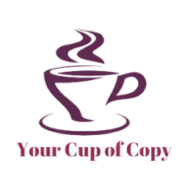Strategies for Repurposing Content into Thought Leader Articles
Transforming Blog Posts into Thought Leader Articles
Blog posts are often concise and to the point, but they can serve as the foundation for more in-depth thought leader articles. Here’s how to repurpose a blog post into a comprehensive article:
- Expand on Key Points: Review your blog post’s main ideas and dive deeper. Provide additional insights, include real-world examples, and support your points with data or research.
- Add a Fresh Perspective: Update the content with the latest industry trends or your current thoughts on the topic. This makes the content more relevant and showcases your evolving expertise.
- Integrate Visuals and Case Studies: Enhance the article with visuals such as charts, infographics, or case studies to provide a more comprehensive view of the subject.
Converting Webinars or Videos into Written Content
Webinars and videos are goldmines for content repurposing. Here’s how to turn them into thought leader articles:
- Transcribe the Content: Start by transcribing the video or webinar. This gives you a textual foundation with which to work.
- Organize the Content: Structure the transcription into a coherent article. Break it down into sections, and add headings to improve readability.
- Enhance with Additional Insights: Don’t just stick to the transcript—expand on the ideas presented in the webinar or video. Include additional research, new insights, or alternative viewpoints to add value for your readers.
Turning Case Studies into Expert Commentary
Case studies are excellent for demonstrating your expertise. Here’s how to repurpose them into thought leader articles:
- Analyze Broader Implications: Instead of just presenting the case study, analyze its broader implications. What does it say about industry trends or best practices?
- Discuss Challenges and Solutions: Highlight the challenges faced in the case study and how they overcame them. Comment on why these solutions worked and how they can be applied to similar situations.
- Engage with Industry Insights: Use the case study as a jumping-off point to discuss industry insights, offering your audience a deeper understanding of the topic.
To learn more about repurposing content, download our free guide, “Maximize Your Content in 30 Days: An Entrepreneur’s Guide to Repurposing.”










